Surfing Costa Rica: A First-Hand Guide to Learning to Surf in Costa Rica
At age 32, my surf journey began in Costa Rica. In this post, I share not only where I’ve surfed in Costa Rica, but how it went and what you need to know about surfing in the land of pura vida.
This entry may contain affiliate links. This means if you click a link in this post and make a purchase, I may earn a small commission at no additional cost to you. It’s through affiliate links that I’m able to keep this blog going, so thank you for your clicks and support!
Learning to surf has been a dream of mine ever since I was a little girl posing with hibiscus flowers and having Blue Crush-themed birthday parties. At age 32, my surf journey finally began in Costa Rica. In this post, I share not only where I’ve surfed, but how it went and what you need to know about surfing Costa Rica.
Costa Rica is where I finally embarked upon my surf dream in a more serious and determined way. While I’d previously had one-off surf lessons in spots like Puerto Escondido, Mexico and Ayampe, Ecuador, they hadn’t gotten me very far. The big waves of Puerto Escondido washed me ashore halfway through my lesson, while Ayampe left me with an over-extended knee when I made the noob mistake of stepping off my board in the shallows.
Beat up and slightly traumatized, I didn’t pick my surf aspirations back up for another few years. It wasn’t until a breezy November day in Nazaré, Portugal, while watching the big wave surfers tow in to monstrous waves, that every bone in my body was saying it’s time. Not then, of course, but soon. Seated on those windswept sands, and more than a little inspired, I made the firm commitment to myself to start next year with a surf camp. And that is exactly what I did.
This post is both a re-telling of my surf story, as it pertains to Costa Rica, and a practical guide to surfing Costa Rica as I’ve done it and as I’ll continue to. So, yes this is an ever-evolving page, updated in step with my surf journey. I hope you find it helpful as much as entertaining, and maybe even a little bit inspiring, too.
Table of Contents
In this guide: Jacó and Uvita (so far)
Jacó
Jacó’s Part in my Surf Story
Jacó Surf Specs
Surf Camps in Jacó
Surf Lessons and Board Rentals in Jacò
Surf-Friendly Lodging in Jacó
Uvita
Uvita’s Part in my Surf Story
Uvita Surf Specs
Surf Camps in Uvita
Surf Lessons and Board Rentals in Uvita
Surf-Friendly Lodging in Uvita
Other Beginner-Friendly Surf Spots in Costa Rica
Jacó, Costa Rica
Photo Credit: School of the World
Located on the Pacific coastline of Costa Rica, just an hour and a half from the capital San José, Jacó is a rough-and-tumble surf and party town with year-round waves and beginner-friendly breaks. While beauty, when not beachfront, is hard to come by in this buzzing town, it does have it all, from supermarkets to souvenir shops, local sodas, and nightlife. It’s not a sleepy spot by any means and the surf infrastructure is there, too, with more than a few surf camps, surf schools, surf shops, and surf-friendly lodging to support you in the waves of Jacó.
About Jacó as a Surf Spot
year-round, beginner-friendly surf spot and one of Costa Rica’s most consistent, but consistently average
cleanest waves come in during the summer months, Costa Rica’s wet season
exposed beach break with a sandy bottom, better at high tide
lefts and rights on offer and multiple peaks
beware of rips, undertow, stingrays, and the occasional crocodile
Surf Camps in Jacó
Photo Credit: School of the World
I kicked off 2023 in Costa Rica at a surf camp called School of the World. It was affordable at $500 for the week, located on a beginner-friendly beach, and complete with a pool, kitchen, and yoga studio on-site. The rooms, though shared, weren’t dorm-style. They were two-bed, meaning just one roommate (if that), en suite, air-conditioned, and each room had a small kitchen with a fridge, sink, and dishware. It felt like a steal.
Because I was on a budget and there for surf and surf only, I didn’t capitalize on their other offerings. School of the World does what’s called learning vacations, meaning they not only offer daily surf lessons (one or two sessions a day), but you can opt to add on yoga classes, Spanish lessons, and photo/video classes. It’s genius and I’ve yet to see the same concept repeated anywhere else.
As this was my first proper go at surfing, I spent my week in Jacó entirely in the whitewater, first finding my balance on the board and being pushed into waves, then experimenting with some turns. While the green waves behind me beckoned, I wanted to do this right and all in due time. Even then, I knew this was a journey that shouldn’t be rushed. And at first paddle, I could tell my mind was the first block to be busted. A trick my instructor offered up then that I still lean on now is to sing a song at the takeoff. My song? Don’t Stop Believing.
About School of the World
Combines the elements of a surf camp, language school, yoga retreat, photography program, and boutique hotel under one roof
Pricing starts at $500 for surf-only programming, includes daily 2-hour lessons, board, rash guard, transport to the beach, and a video review mid-week.
Amenities include private or shared accommodations, an outdoor swimming pool, access to the yoga studio and mats when classes aren’t in session, kitchen (efficiency kitchen in your room and proper kitchen in the main area), and wifi (though it’s not the strongest).
Book directly or, if you want to support the blog, book through this link.
Other Surf Camps in Jacó
Room2Board Hostel & Surf School offers 3-, 5-, and 7-day surf camp options that incorporate non-surf activities like sunset hikes, meditation, yoga, and breathwork.
Associated with Selina hostels, Tortuga Surf Camp offers 7-, 14, and 22-day surf camp packages that include roundtrip airport transfers, accommodations, professional video and photography review, a survival apnea workshop, unlimited board rentals during your stay, and a skateboarding workshop.
Run by former pro surfer Diego Naranjo, this surf camp has 7-day packages that include 7 surf lessons, your accommodations, a daily breakfast, a USB of your surf photos, a massage or crocodile tour, and one yoga lesson.
Offering 3-, 5-, and 7-day surf camp packages, this surf camp includes daily lessons, accommodations, one meal per day, a daily activity, and unlimited board rentals during camp.
Surf Lessons + Board Rentals in Jacó
In Jacó, surf lessons range from $50 to $80 for a 1.5 to 2-hour lesson and rentals range from $12 for 2 hours, $20 for the day, and $100 for the week.
I recommend Ride In Surf for lessons. The lead instructor Anthony also teaches at School of the World and is a local pro surfer who speaks fluent English. Two-hour lessons start at $60USD. Book here.
For more surf lesson options in Jacó, check Viator and TripAdvisor.
Surf-Friendly Lodging in Jacó
A coliving hostel with surf camp packages should you wish to book them, Jaco Inn offers a free daily breakfast, access to their coworking space, a kitchen and grilling area, wellness offerings, common areas, and pop-up activities. You’re also welcome to sign up for individual surf lessons or board rentals.
Check Availability: HostelWorld | Trivago
Partnered with Tortuga Surf Camp, this beachfront hostel has a swimming pool, beachfront bar and restaurant, coworking space, wellness area, movie room, and access to surf lessons, board rentals, and surf camp packages
Check Availability: Booking.com | HostelWorld
This boutique hostel doubles as a surf camp, but you can choose to stay and surf on your own too. You’ll have access to a shared kitchen, plenty of common areas to hang out, a swimming pool, board rentals and storage, surf lessons, daily yoga classes, and a coworking space.
Check Availability: Booking.com | HostelWorld | Agoda
Read my full Jacó guide for tips on things to do, where to eat and drink, and how to get to and from town by public transportation.
Uvita, Costa Rica
Photo Credit: Bodhi Surf + Yoga
After my surf camp in Jacó, I continued south down the Pacific coast of Costa Rica to reach Uvita. This splayed-out town is a gem that still clings to its authenticity, even as more and more surf camps and hotels crop up within its lush folds. The waves aren’t as consistent as on other coastlines, but they are consistently empty and against epic jungle-meets-sea backdrops. When you’re not surfing, there are waterfalls and hot springs to explore, howler monkeys and exotic birdlife to peer up at in the treetops, whales to watch, and a range of restaurants, craft beer bars, and cafes to frequent that paint the picture quite quickly that community comes first in Uvita. How refreshing.
I got in the water twice while in Uvita, finally giving the green waves a go with two different instructors - Adrian at Bodhi Surf + Yoga and Leandro at Uvita Surf + Tour. Let’s just say I got to finesse my turtle roll, face my fears in bigger waves, and reinforce some surf theory. Actually surf? Not so much. The green waves weren’t ready for me yet. They kept sending me into a nose-dive for some reason…
About Uvita as a Surf Spot
great for beginners and intermediates alike
year-round surf and little to no crowds
southern end, known as Playa Chaman, is the most consistent, while north end by the rivermouth sometimes produces a sand bar
sandy-bottomed beach break with a rivermouth, best at high to mid-tide
waves are cleanest between December and March and biggest between May and September
there’s a $6USD entry fee for tourists as the beach sits within the Marino Ballena National Park
beware of stingrays, jellyfish, and rip currents
Check out my Uvita travel guide for tips on things to do, places to eat and drink, and how to get to and from Uvita by public transportation.
Surf Camps in Uvita
Photo Credit: Bodhi Surf + Yoga
While I didn’t attend the surf camp here firsthand, I did take lessons with one of their ISA-certified instructors, which meant I got a peek behind the gates of their beautiful wood cabin-like base and the inside scoop on what it might be like as a surf camp attendee at a B Corp-certified surf camp. Their 7-day, semi-inclusive surf and yoga camp includes 5 surf lessons, 5 yoga classes, daily breakfast, 3 dinners, and your national park entrance fees at Marino Ballena National Park where your lessons take place. It also includes roundtrip transport to and from the airport in San Jose, plus one night’s lodging in San Jose on your way in. Accommodation is in luxurious bungalow-style rooms with porches, some of which also include kitchenettes. Other amenities include a swimming pool, common areas with day beds and hammocks, therapeutic mattresses, and healthy, locally sourced meals.
Bodhi Surf + Yoga’s Camps
Surf Lessons & Board Rentals in Uvita
In Uvita, surf lessons range from $60 to $90 for a 2- to 3-hour lesson and board rentals range from $15 for the day to $90 for five days.
For Board Rentals: I recommend Casa Tiburón Surf Rentals and Colo Tico Boards.
For Surf Lessons: I recommend Uvita Surf + Tour. Leandro leads classes that push you just enough outside your comfort zone to take you to the next level while still keeping you safe. Two-hour lessons start at $60USD. Book here.
For more surf lesson options in Uvita, check Viator and TripAdvisor.
Surf-Friendly Lodging in Uvita
Located steps from the sands of Marino Ballena National Park, this is as close as it gets to surf on your doorstep in Uvita. Each of Arboura Eco Cabins’ five A-frame cabins have air conditioning, a private bathroom, a private patio, and a well-equipped kitchen. There’s also a pool on the grounds and a common area with a ping pong table and chess set.
Check Availability: Booking.com | Agoda
Another cabin-style accommodation steps from Marino Ballena National Park is Bungalows Ballena. Slightly pricier than Arboura Eco Cabins, each 1- or 2-bedroom wood cabin bungalow comes with a terrace, private bathroom, air conditioning, wifi, and a fully-equipped kitchen. Their whale tail-shaped pool and kiddie pool are there for you between surfs and there’s a gas grill and mini fridge available in the common area for barbecuing outdoors.
Check Availability: Booking.com | Agoda
Located half a kilometer from the main surf point, Tropical Beach Hotel offers air-conditioned rooms with private balconies and access to a guest kitchen. There’s also a gorgeous outdoor swimming pool with a poolside bar and restaurant on-site.
Check Availability: Booking.com | Agoda
Additional Beginner-Friendly Surf Spots in Costa Rica
Based on my own surf experience in Costa Rica and the surf community connections I made along the way, I was commissioned to write a beginner-friendly surf guide to Costa Rica for a publication called Surfers. In it, you’ll spot Uvita and Jacó, but also a few other spots that haven’t yet made it into this first-hand guide. Check it out for more beginner-friendly surf inspiration for your next trip to Costa Rica.
Costa Rica’s protected bays, sandy bottom beaches, warm water waves, and year-round consistency make it one of the best places in the world to learn how to surf. Here’s where to go and when.
If you found this post helpful, one of the best ways to say thanks, besides funding my next caffeine fix, is by booking your hotels, transport, tours, and trip insurance through the links on my Travel Resources page or by clicking any of the trip-relevant links below. This sends a bit back my way at no additional cost to you and helps to keep this blog up and running. Thank you for your support!
Accommodations: Booking.com, HostelWorld, Trivago
Tours & Experiences: Viator, GetYourGuide, EatWith, TripAdvisor
Trains, Buses, & Transfers: Bookaway, 12Go, BusBud
Car Rentals: DiscoverCars.com
Trip Insurance: Squaremouth, WorldTrips
Learn Spanish: Rosetta Stone, Babbel, Pimsleur
What to Read Next
Uvita Travel Guide: Where to Eat, Stay, and Explore
Uvita is the stuff of legends, or so it was for me. This beach town was the one spot consistently recommended by what felt like every traveler I met. Here’s where I ate, drank, slept, and explored in this infamous spot.
This entry may contain affiliate links. This means if you click a link in this post and make a purchase, I may earn a small commission at no additional cost to you.
Uvita was a legend by the time I finally visited myself. From the moment I had touched down in Costa Rica, at least one person in every town I visited would mention they had some of the best moments of their trip there. So, after wrapping up my surf school in Jacó, I boarded a local bus and traveled a few hours south to Uvita, where I, too, had some trip-making moments. Most of mine were around the breakfast table with fellow guests but also in the water with surf instructors. What I realized is that Uvita’s charm isn’t so much about its attractions, though the whale tail-shaped beach is pretty cool, it’s about the people it seems to attract and the simple pleasure of being so close to nature.
First Things First: How To Get To Uvita
If you plan to get to Uvita from further up the coast (like I did), places like Manuel Antonio, Quepos, or Jacó, here’s how to do it:
By Public Transport
From San Jose: You’ll take the Tracopa bus direct to Uvita (terminal location). Buses leave almost hourly starting at 5:30am until about 2pm. You can book your ticket at the station or via the app Passer (not affiliated)
From Jaco: You have two options…
Option 1: Flag down the direct bus (the bright pink Tracopa bus) on the main highway (exact location) and hope they have room - latest schedule here.
Option 2: You can break up the journey with a transfer in Quepos and an assured seat (this is how I did it). From the public bus stop on Pastor Diaz in Jaco (beach side of the road), wait for the bus that says Quepos. They depart almost hourly from 6am to 7pm (2000CRC, pay onboard). In Quepos, you’ll be dropped at a bus terminal where you can then purchase a ticket for Uvita with Transportes Blanco y Hernandez (~2 hours). At the time of writing this (early 2023), the departure schedule is 6am, 9:30am, 11am, 2:30pm, and 5:30pm daily.
From Montezuma or Santa Teresa: First, take the bus to Cobano. Then from Cobano, catch the bus to Paquera where the public ferry to Puntarenas departs. Alternatively, you can book a faster ferry right from Montezuma or Santa Teresa with one of the private ferry companies like Zuma Tours (see pricing and availability on Bookaway or 12Go). In early 2023, the public ferry at Paquera departed at 6am, 10am, 12:30pm, 3pm and 5pm (please verify). You can book your ticket in advance via QuickPayCR (not affiliated). Once in Puntarenas, you can try to flag down the direct bus coming from San Jose to Uvita (bright pink Tracopa bus) on the main highway. Otherwise, you’ll need get a bus first to Quepos and then transfer to a bus headed for Uvita. It’s a bit complicated, so I recommend going private for this journey, even just in booking the ferry with a private company as they can ensure you get on the right bus from Puntarenas.
By Shuttle or Private Transfer
If time (and your sanity) is of the essence, I highly recommend checking out the routes on Bookaway or 12Go, two reliable sites that aggregate vetted local transportation operators and that offer the added benefit of 24-hour live support should anything come up during your trip. I wasted far too much time waiting for buses in both Jacó and at the transfer point in Quepos when trying to get to Uvita by public transportation. Prices for a shuttle start at $50USD for a direct shuttle and the journey takes about 2.5 hours.
Explore Bookaway’s routes to/from Uvita and beyond
Explore 12Go’s routes to/from Uvita and beyond
Restaurants & Cafes I Loved
Whale Tail Brewery & Gastropub
Attached to Whale Tail Hotel, where I stayed, this craft brewery has excellent craft beer on tacp and a menu of typical pub fare, but elevated.
Bar Restaurant Los Laureles
I didn’t get to try this spot, but I was recommended it by a few at my hotel who had. They said everything from the food to the ambiance was top-notch.
Fun Things to Do
Attend a Surf Camp or Sign up for Surf Lessons
Like Jacó, Uvita is a Costa Rican surf hub, full of surf camps and instructors. I did a lesson with Leandro of Uvita Surf + Tour and another with Adrianna of Bodhi Surf + Yoga (a surf camp that also offers private and group surf lessons upon request). I’d recommend either one. I learned new skills from each instructor and realized that perhaps there’s a benefit to learning from more than one instructor as I continue with my surf journey this year.
Visit Neighboring Dominical
Though I didn’t get a chance to do this (too focused on the surfing in Uvita), many at my hostel did and loved it. Dominical is a 15- to 20-mintue drive from Uvita and offers a slightly different glimpse of life in the Osa Peninsula. While Uvita is extremely spread out, Dominical is compact and easy to explore, with beautiful beaches for surf and swim too. It’s a spot my bus to Uvita passed through, and that I made a mental note to visit should I ever return to Costa Rica. It had Sámara vibes, and if you read my reaction to that beach town, you know that’s a good thing.
Where I Stayed
Whale Tail Hotel
Tucked within its own little pocket of Uvita jungle, this hotel/hostel has privates and dorms, a swimming pool, a kitchen for guest use, breakfast is included (gallo pinto or pancakes), and there’s an attached brewery. Though they didn’t have a yoga instructor while I was there, they typically also offer yoga classes and surf lessons are available upon request.
Found this helpful?
I spend a lot of time in coffee shops putting together content like this. If you’d like to support my work, consider buying me a coffee to show some love ❤️
If you found this post helpful, one of the best ways to say thanks is by booking your hotels, transport, tours, and trip insurance through the links on my Travel Resources page or by clicking any of the trip-relevant links below. This sends a bit back my way at no additional cost to you and helps to keep this blog up and running. Thank you for your support!
Accommodations: Booking.com, HostelWorld, Trivago
Tours & Experiences: Viator, GetYourGuide, EatWith, TripAdvisor
Trains, Buses, & Transfers: Bookaway, 12Go, BusBud
Car Rentals: DiscoverCars.com
Trip Insurance: Squaremouth, WorldTrips
Learn Spanish: Rosetta Stone, Babbel, Pimsleur
What to Read Next
Costa Rica Foot Tracks
A Travel Guide to Jacó, The Taboo Surf Town That's Got Far More Going for It
Jacó is a surf town with a darker reputation, but after my week surfing its waves, taking its tours, and dining in its restaurants, I say go and follow in a few of my foot tracks.
This entry may contain affiliate links. This means if you click a link in this post and make a purchase, I may earn a small commission at no additional cost to you.
Jacó was the scene of my much-anticipated surf camp at School of the World. In the day’s preceding my visit, I was being warned from every direction to be careful in this Costa Rican beach town. It’s a destination with a reputation for being as known for its beginner-friendly waves as for its after-dark transition into a land of drugs and prostitutes. While I can say the reputation checks out on both accounts, I not once felt unsafe in my full week there. I’d even go as far as to say there’s no better spot to base your Costa Rica adventures from. Besides the fact that many of Costa Rica’s top destinations (think Monteverde, Manuel Antonio, and Montezuma) are within easy reach by boat, by bus, or by car, Jacó itself has quite the menu of adrenaline-pumping tours and activities of its own. By week’s end, I guarantee you, like me, will wonder where the time went. Below are a few tried and true Jacó recommendations to get your own adventure in this undeservedly taboo town started.
Restaurants & Cafes
Roasted Edge
A coffee shop run by Ocean’s Edge Ministries, this spot knows how to get creative with their caffeine. While I was in, they were sampling their Raspberry Mocha and S’mores Latte.
Sabress Kosher
This Israeli-run restaurant dishes up all the Mediterranean and Middle Eastern classics. Think falafel, hummus, shawarma, and shakshuka, all of which is best washed down with their satisfying mint lemonade.
Green Room Cafe Bar
Though I didn’t ever get to actually visit this restaurant while in Jacó, it came highly recommended for its good food, impressive Costa Rican craft beer selection, and frequent live music and events.
Soda Garabito
This is your classic Costa Rican soda that comes fully alive at lunch hour. Join the lines and get your plate filled cafeteria-style with various meats, rice, beans, and salads at a great price.
Things to Do
Spot Wildlife at Carara National Park
This beautiful national park, just 45 minutes from Jacó and minutes from the famous crocodile bridge, is best explored with a guide. Spot everything from monkeys and scarlet macaws to snakes and iguanas while following jungle trails singing with cicadas and learning about the forest, plants, and ecosystem. Entrance without a guide is $10 USD, but learn from my mistake and go with a guide for their sharp eye, binoculars, and expertise. This guided tour on Viator has great reviews and includes the entrance fee.
Visit the Tarcoles Crocodile Bridge
While you could just do a quick drive-by to this notorious Jacó spot to view the massive crocodiles that sunbathe beneath the bridge, I’d recommend going for a river cruise with local experts to get even closer. This guided crocodile watching tour comes highly recommended and is locally-operated by passionate guides like Jason Vargas, who’s appeared on Discovery Channel, NatGeo , Animal Planet, and the BBC.
Go for a Canyoning Tour
Jacó is an adrenaline junkie’s playground and canyoning is a great way to not only get the blood pumping, but to immerse yourself in its jungle scenes and wildlife too. Due to a snafu in communication, I did not do the canyoning tour I thought I had signed up for (it was more waterfall hike with occasional rope rappelling), so I want to make sure you do get on the right tour. Here’s a link to a proper Jacó canyoning tour with glowing reviews at a great price.
Sign up for a Surf Lesson
Jacó is by definition a surf town. Further still, it’s one of the best spots in Costa Rica for beginner-friendly waves. Take it from me, I spent a week learning to surf in its swells… though I did my lessons through School of the World Surf Camp, a week-long experience that included lodging. If you’re looking for one-off lessons, here’s a highly rated surf school that offers 2-hour lessons at an incredible rate that includes your board rental and rash guard.
Hotels
School of the World Surf Camp
If you are looking for the surf camp experience in Jacó, let me point you to School of the World. They not only package your surf lessons with your stay, but you can also sign up for Spanish photo/video, and yoga classes to really round out your schedule. You can stay as short as one week or as long as multiple months, and some do! The grounds are gorgeous with a swimming pool, hammocks, and a full kitchen for guest use.
Onward Travel (and how to do it)
If you plan to travel from Jacó to points further south down the coast, places like Manuel Antonio, Quepos, Uvita, or Dominical, read my how-to on navigating the public transport. The step-by-step is included at the end of my Jacó travelogue. There’s also information in there on how to get to/from Montezuma (Nicoya Peninsula) from Jacó. In short, it’s easy enough to travel by public bus between Jacó and Uvita, either directly or with one bus transfer in Quepos.
Found this helpful?
I spend a lot of time in coffee shops putting together content like this. If you’d like to support my work, consider buying me a coffee to show some love ❤️
If you found this post helpful, one of the best ways to say thanks is by booking your hotels, transport, tours, and trip insurance through the links on my Travel Resources page or by clicking any of the trip-relevant links below. This sends a bit back my way at no additional cost to you and helps to keep this blog up and running. Thank you for your support!
Accommodations: Booking.com, HostelWorld, Trivago
Tours & Experiences: Viator, GetYourGuide, EatWith, TripAdvisor
Trains, Buses, & Transfers: Bookaway, 12Go, BusBud
Car Rentals: DiscoverCars.com
Trip Insurance: Squaremouth, WorldTrips
Learn Spanish: Rosetta Stone, Babbel, Pimsleur
What to Read Next
Costa Rica Foot Tracks
Where to Eat, Sleep, and Play in Montezuma, Costa Rica
Montezuma’s easy to love, with coastal trails to follow, interesting eateries, and a thriving community spirit. Here’s where to go, what to eat, and where to rest your head.
This entry may contain affiliate links. This means if you click a link in this post and make a purchase, I may earn a small commission at no additional cost to you.
Montezuma was easy to love. Between its jungle-lined coastal trails that lead to gloriously empty beaches and freshwater pools to its interesting eateries, refreshingly present community spirit, and frequent hellos from the thriving capuchin monkey population, this is a place where every day - scratch that - every moment is a new adventure. I’m selfishly glad it’s a bit hard to reach because just maybe this Costa Rican beachtown can hang on to its authenticity and charm awhile longer. If you do make the trek to this gem at the southern tip of the Nicoya Peninsula, here are my recommendations for where to eat, what to do, and where to sleep.
First Things First: Getting to/from Montezuma
By Public Transport
From Santa Teresa: It is possible to travel by public bus between Santa Teresa and Montezuma, however, it will turn what could be a quick 30-minute drive into a 2.5- to 3-hour journey, and that is if you time the bus in Cóbano right. The benefit is it will only cost you a mere $4USD total. To do it, you’ll first have to hop on a Transportes Cobano bus along the main road in Santa Teresa and take it to Cobano (ask a local for the latest schedule as it’s always changing). From Cobano, you’ll transfer to a bus headed towards Montezuma, again with Transportes Cobano. Here’s the latest schedule.
From Puntarenas: There is a ferry from Puntarenas, which is “near” places like Jaco and San Jose, that will drop you in Paquera in the Nicoya Peninsula. From Paquera, you’ll take a local bus to Cobano. From Cobano, you can get a bus to Montezuma.
From Samara and points north in the Nicoya Peninsula: This is a trip I do not recommend you take and one that should really just be done by shared shuttle or private transport (I recommend searching Bookaway or 12Go’s routes first). Doing this by public transport involves far too many transfers and it’s a very roundabout way to get there. But if you want to do it, here’s how: Take a bus from Samara (or your point north) to Nicoya, then a bus from Nicoya to Cruce de Barranca, then Cruce de Barranca to the ferry port in Puntarenas. The ferry will drop you in Paquera. From there, you’ll take a bus to Cobano and then another bus from Cobano to Montezuma.
By Private Transport or Shared Shuttle
Uber does work in Costa Rica, so you could always check that first. Or check out the routes on Bookaway or 12Go, two reliable sites that aggregate vetted local transportation operators and that offer the added benefit of 24-hour live support should anything come up during your trip.
Explore Bookaway’s routes to/from Montezuma and beyond
Explore 12Go’s routes to/from Montezuma and beyond
Restaurants
The Bakery Cafe
Delicious cafe and restaurant on the edge of town, where it’s almost guaranteed you’ll receive a few visits from the local capuchin monkey population while you dine.
Pizzería Chelo Montezuma
A Montezuma legend, this Argentinian-run Italian pizzeria is famous for running out of pies by a certain hour - they’re really that good.
Butterfly Brewing Co.
This craft brewpub doubles as a butterfly sanctuary. Beer and butterflies…catchy no? Their food menu is as delicious as their beer selection, so come thirsty and hungry.
Ice Dream Gelato & Coffee Shop
There’s no better way to beat the heat in Montezuma than with a double scoop from this spot. Located in the heart of Montezuma, there’s always someone licking a cone of gelato or nursing a coffee at this popular local hangout.
Soda El Artesano
Though I didn’t get to try this soda firsthand, I was recommended it multiple times by locals and travelers alike. It seemed to be always full, so it’s a safe bet it belongs on this list of recommendations. If you go, let me know how it was!
Things to Do
Walk the Sendero Verde
This trail follows the coastline from Montezuma Beach, passing points of interest like Piedra Colorada, a beachfront freshwater pool surrounded by stacked rocks, the vast and gloriously empty Playa Grande, and the Nicolas Wessberg Absolute Natural Reserve.
Experience the Montezuma Saturday Market
Every Saturday morning at 10:30am, there is an organic farmer’s market at Cancha las Pangas. It’s full of vendors selling everything from handmade souvenirs to flowers, light bites, and organic fruit and veggies, of course.
Hike to the Montezuma Waterfalls
Just a 20-minute walk from the trailhead are the stunning Montezuma Falls. Entrance is free for the lowest (and biggest) waterfall. To visit the other two falls further up the mountain, there is an entrance fee of $2 USD (1,000 Colones). I recommend wearing sturdy, waterproof shoes for the hike there, as you’ll be crossing riverbeds and lunging over tree roots.
Hotels
Hotel Montezuma Pacifico
Surprisingly, Montezuma’s hostel game is seriously lacking. They exist, but none of them have the best portfolio of reviews on booking sites. That’s how I ended up booking a room at Hotel Montezuma Pacifico, an affordable hotel on the edge of town where iguanas and monkeys are frequent sights out the window and sounds on the roof. Carlos, the owner, felt like my Costa Rican dad, delivering coffee and breakfast to my room, setting me up with an induction cooktop to cook meals in my room, and making sure I got the appropriate rate for tours and shuttles. I’d stay here again in a heartbeat.
Onward Travel (and how to do it)
If your plan from Montezuma is to head for places like Jacó, Manuel Antonio, Quepos, Uvita, or Dominical, read my how-to on navigating the public transport (to include the ferry) and/or booking a shared shuttle. The step-by-step is included at the end of my Montezuma travelogue. There’s also information in there on how to get to/from Uvita from Jacó.
Useful Links
Guide to Montezuma (Sightseeing, Tours, Activities, Dining, Lodging) via Montezuma-CostaRica.com, Montezuma’s own non-profit community initiative.
Found this helpful?
I spend a lot of time in coffee shops putting together content like this. If you’d like to support my work, consider buying me a coffee to show some love ❤️
If you found this post helpful, one of the best ways to say thanks is by booking your hotels, transport, tours, and trip insurance through the links on my Travel Resources page or by clicking any of the trip-relevant links below. This sends a bit back my way at no additional cost to you and helps to keep this blog up and running. Thank you for your support!
Accommodations: Booking.com, HostelWorld, Trivago
Tours & Experiences: Viator, GetYourGuide, EatWith, TripAdvisor
Trains, Buses, & Transfers: Bookaway, 12Go, BusBud
Car Rentals: DiscoverCars.com
Trip Insurance: Squaremouth, WorldTrips
Learn Spanish: Rosetta Stone, Babbel, Pimsleur
What to Read Next
How to Spend 24 Hours in Santa Teresa, Costa Rica
A solid 24 hours is all I had in the Nicoya Peninsula surf town of Santa Teresa. Here's how and where I spent my precious time.
This entry may contain affiliate links. This means if you click a link in this post and make a purchase, I may earn a small commission at no additional cost to you.
I’ll be perfectly honest and share that my visit to Santa Teresa barely lasted 24 hours. It was a spot I slipped into my itinerary at the last second en route to Montezuma from Sámara. I stayed one night in a giant queen-sized bunk bed and spent the one afternoon and one morning I had either on the beach with a book, snagging a table at a restaurant Google claimed to be good, or downward dogging in a yoga studio. The town itself, I am sure, requires more time than I gave it to catch its charm. On the surface, it’s crowded, dusty, and international, without a trace of any sort of authentic local culture - or sidewalks! But I can honestly say that by my final few hours there, after connecting with others at my hostel and getting past my own initial judgements, I kinda sorta wished I had more time. I know I owe Santa Teresa a second chance. Nevertheless, here are the gems I did find in my brief time in this Nicoya Peninsula surf town.
First Things First: Getting to Santa Teresa
If your plan is to arrive to Santa Teresa from points further up the Nicoya Peninsula, places like Sámara, Nosara, or Tamarindo, read my how-to on navigating the public transport and/or booking a shared shuttle. The step-by-step is included at the end of my Santa Teresa travelogue. Warning: It’s a pretty involved journey should you choose to take public transport. There’s also information in there on how to get to/from Montezuma from Santa Teresa (a much easier journey).
Restaurants
Eat Street
This food hall-style eatery offers a variety of Asian-inspired bowls and Mexican fare like burritos, tacos, and quesadillas, plus a craft cocktail-slinging bar with happy hour specials, fresh juices, and a highly tempting dessert line up to pair with any meal.
Ani’s Bowls & Salads
Good luck snagging a table at this popular Santa Teresa brunch spot. Their menu is full of fresh, healthy, and delicious bowls, salads, smoothies, and sandwiches - exactly what I crave in the Costa Rican heat.
Things to Do
Attend a Yoga Class at Don Jon’s Surf & Yoga Lodge
Don Jon’s Surf and Yoga Lodge offers affordable daily yoga classes multiple times a day for guests and non-guests. While I was there, they had classes at 8am, 10am, and 6:30pm daily, ranging from Hatha and Vinyasa to Kundalini. Just wander over to their chalkboard outside the hostel for the latest schedule. No need to reserve in advance.
Catch Sunset on the Sand
With the beaches of Santa Teresa perfectly west-facing, sunset is an event in this surf town. By 5pm, the beach fills out with what feels like every living soul in town, either equipped with a cooler of beers or their surfboard, while vendors roam hawking everything from empanadas and ceviche to happy brownies and supplemental cold Coronas.
Hostels
ICO Living Hostel
This new-to-the-scene Santa Teresa hostel has something I’ve never seen before - bunks with queen-sized mattresses! Another perk of staying here, besides the air conditioning in the room, is that it’s tucked off the dusty main street so it’s pretty quiet at all hours. There’s a communal kitchen and plenty of space to hang out or get some work done if you’re a digital nomad like me.
Found this helpful?
I spend a lot of time in coffee shops putting together content like this. If you’d like to support my work, consider buying me a coffee to show some love ❤️
If you found this post helpful, one of the best ways to say thanks is by booking your hotels, transport, tours, and trip insurance through the links on my Travel Resources page or by clicking any of the trip-relevant links below. This sends a bit back my way at no additional cost to you and helps to keep this blog up and running. Thank you for your support!
Accommodations: Booking.com, HostelWorld, Trivago
Tours & Experiences: Viator, GetYourGuide, EatWith, TripAdvisor
Trains, Buses, & Transfers: Bookaway, 12Go, BusBud
Car Rentals: DiscoverCars.com
Trip Insurance: Squaremouth, WorldTrips
Learn Spanish: Rosetta Stone, Babbel, Pimsleur
What to Read Next
A Guide to Sámara, The Laidback Costa Rican Beach Town Living on Pura Vida
The bites, sips, and stays that composed my time in the Costa Rican beach town of Sámara.
This entry may contain affiliate links. This means if you click a link in this post and make a purchase, I may earn a small commission at no additional cost to you.
My visit to Sámara was like a lesson in “pura vida.” Everything about this town and my experience there was simply sweet - emphasis on “simply.” From the breezy cafes and restaurants to the lazy days on the sand and the basic, but perfectly comfortable, dorm room I rested my head in each night, Sámara pushed me into a satisfyingly slow pace and set the tone for my Costa Rican adventure as a whole. This beach town in the shadows of neighboring Nosara - its antithesis - showed me that simple pleasures are the best kind of pleasure, especially when paired with paradise. What follows are the restaurants, cafes, yoga studios, and hostels that comprised my slow, simple, and sweet few days in Sámara, Costa Rica.
First Things First: How to Arrive to Sámara
If you, like me, arrived to Sámara from Central Costa Rica locales, places like La Fortuna, Monteverde, and San Jose, read my how-to on navigating the public transport and/or booking a shared shuttle. The step-by-step is included at the end of my Sámara travelogue. There’s also information in there on how to get to Santa Teresa from Sámara (not an easy task) and how to get to/from Montezuma from Santa Teresa (much easier). Personally, I went with the shared shuttle service and would highly recommend if your budget allows.
Restaurants & Cafes
Mr. Pelícano
Casual seafood restaurant with serious beach town vibes tucked within a food market
Marea Surf Shop + Cafe
Smoothies, coffee, breakfast bites, and lunch fare alongside inspirational (for this wannabe surfer at least) surf gear
Coco’s Mexican Restaurant / 2 Gringos Artisan Brewing
A top-rated Costa Rican brewery and Mexican restaurant join forces at this unassuming spot
Things to Do
Attend a Yoga or Barre Class at Tico Adventure Lodge
90-minute yoga and barre classes in the peaceful treehouse-like setting of Tico Adventure Lodge. Classes are taught daily by Kelly of Chillasana Yoga + Surf. If you know you’re staying for a while, they do offer 5- and 10-class passes to save you a few Colones, or you can drop-in for $15 USD (8,000 Colones). For the latest class schedule, visit their Facebook page.
Hostels
Hostel Samara
A no-frills hostel kept immaculately clean with access to a full kitchen and located within minutes of the Samara sands.
Found this helpful?
I spend a lot of time in coffee shops putting together content like this. If you’d like to support my work, consider buying me a coffee to show some love ❤️
Travel Resources
Accommodations: When I’m not booking directly with the accommodation (which is sometimes cheaper), I often use Booking.com, Trivago, and Hostelworld.com. Agoda is also a great tool when searching for longer stay options at discounted rates that include hotels and private homes.
Tours: While I personally prefer do-it-yourself travel most of the time, sometimes it’s just better with a guide. In those cases, I typically use Viator, GetYourGuide, EatWith, and Airbnb Experiences. For self-guided audio tours, I recommend WeGoTrip.
Flights: My favorite flight aggregator tool is WayAway and my favorite tool for finding out about the best flight deals is FareDrop.
Shuttle Services: My go-to is Bookaway. They operate in more than 90 countries and work with only the top, traveler-reviewed suppliers in each country.
Rental Cars: While I more often take public transport when I travel, there have been destinations that are better explored by renting a car (like Costa Rica and Europe/UK for example). In these instances, I recommend starting your car rental search on Discover Cars. They compare car rental deals across more than 500 suppliers, including Hertz, Enterprise, Avis, and more.
Travel Insurance: If you’re a full-time nomad like me, I recommend SafetyWing. Look into their Nomad Travel Medical Insurance and Nomad Health Insurance (a full-fledged health insurance that covers your emergency and non-emergency medical needs worldwide, including in your country of residence). If you’re not a full-time traveler, I’d recommend Squaremouth. It aggregates your insurance options across more than 22 providers and offers what I’ve found to be the best rates.
Travel ATM & Credit Cards: If you travel often and like perks like airport lounge access and annual travel credit, I recommend the Capital One Venture X credit card that includes Priority Pass, a $300 annual travel credit, and covers your Global Entry or TSA Precheck fee. For a fee-free ATM card that reimburses you at the end of every month for any incurred ATM fees, I recommend opening a Schwab Bank Investor Checking Account.
VPN: I recommend Surfshark. It’s one of the best and most budget-friendly VPN services out there.
What to Read Next
Costa Rica Foot Tracks
Where to Eat, Sleep, & Relax in La Fortuna, Costa Rica
The lowdown on where I ate, drank, slept, and wandered while in the steamy jungle town of La Fortuna.
This entry may contain affiliate links. This means if you click a link in this post and make a purchase, I may earn a small commission at no additional cost to you.
La Fortuna is teeming with adventure, nature, wildlife, thermal pools, and…rainfall (you can count on that), all within the shadows of the still active, though quiet, Arenal Volcano. My three days in this steamy jungle town were rain-soaked, but lovely, and mostly spent up to my neck in the town’s copious hot springs. La Fortuna was my first taste of Costa Rica’s acclaimed jungle habitats, hanging bridges, and colorful wildlife and I was not at all disappointed. Below is a guide to everything I ate, drank, and did while in La Fortuna, including where I slept. I was feeling a little under the weather while here, so this list is thin on dining recommendations and thick on relaxing ways to spend a day in La Fortuna - rain or shine.
First Things First: Getting to/from La Fortuna
By Public Transport
From San Jose: Head to Terminal 7-10 (view on map). There’s a bus that leaves daily at 8am. The price at the time of writing was $4,135 CRC ($7-8 USD). You can also purchase tickets in advance at mibus.cr (recommended as you get to board first, but not necessary). The journey can take anywhere from 4 to 6 hours.
By Private Transport or Shared Shuttle
If you’d like to get there faster and in more comfort, check out the routes on Bookaway or 12Go, two reliable sites that aggregate vetted local transportation operators and that offer the added benefit of 24-hour live support should anything come up during your trip. Prices start at $39USD for a shared shuttle (4 hours) and $165USD (expensive but fast!) for a private transfer (2.5 hours).
Explore Bookaway’s routes to/from La Fortuna and beyond
Explore 12Go’s routes to/from La Fortuna and beyond
Rent a Car
Costa Rica’s one of those destinations where having a car is ideal, as public transportation can be complicated and shuttle schedules don’t always align with your plans. For car rentals, I use Discover Cars. It’s great car rental comparison site that finds and compares rates across all of the major rental companies, including Hertz, Avis, Economy, etc.
Yummy Restaurants & Cafes
Arábigos Coffee & Lounge Bar
Open air, but roofed, coffee house with excellent coffee and attached restaurant with full and varied menu of breakfast, lunch, and dinner plates at reasonable prices.
Selina La Fortuna
Tucked inside the Selina La Fortuna hostel, their bar/restaurant is a hidden gem that I only stumbled across because I needed some good wifi. Facing river and jungle, it’s the perfect spot to dine and birdwatch, not to mention time your visit for their excellent happy hour specials.
Top Things to Do
Soak in the Free Hot Springs “Rio Chollin”
Uber or taxi to the free hot springs 15 minutes out of town, day or night, and find a spot amidst the naturally heated waters in the shallow river. This spot is popular with locals and tourists alike, so expect a crowd. At nightfall, people light candles while they soak, creating a seriously ethereal vibe.
Visit Mistico Arenal Hanging Bridges Park
Wander the hanging bridges at Mistico Arenal Hanging Bridges Park. I opted for the self-guided hike, but it may be worth doing a guided tour if you’re hoping to spot wildlife. The entrance fee sans tour is $28 USD. The park opens at 6am and the last time of entry for the self-guided option is 3:30pm. Advanced reservations are recommended
Spend the Day (or Evening) at EcoTermales Hot Springs
For something a little more luxe than Rio Chollin, EcoTermales Hot Springs is a great option. For $45 USD, you can spend the day in a peaceful oasis surrounded by jungle with four different pools of varying temperatures to soak in. A locker and towel is included. It’s best to make a reservation via their website in advance. Time slots are either 9:00am to 4pm or 5pm to 9:30pm.
Hostel I’d Recommend
SanteFe Hostel
A low-cost hostel with a communal kitchen, free coffee all day, and privacy curtains in the dorms. It’s run by a gem of a guy named Edgar, who has a knack for making you feel right at home as soon as you arrive.
Onward Travel (and how to do it)
If your plan from La Fortuna involves beelining it for the Nicoya Peninsula (like mine was) to places like Sámara, Nosara, Santa Teresa, and Montezuma, read my how-to on navigating the public transport and/or booking a shared shuttle. The step-by-step is included at the end of my La Fortuna travelogue. There’s also information in there on how to get to Santa Teresa from Sámara (not an easy feat!) and how to get to/from Montezuma from Santa Teresa (much easier).
Useful Links
Easy Hop: Shared Shuttles to La Fortuna’s Top Attractions (one-way shuttles start at $3 USD)
Found this helpful?
I spend a lot of time in coffee shops putting together content like this. If you’d like to support my work, consider buying me a coffee to show some love ❤️
Travel Resources
Accommodations: When I’m not booking directly with the accommodation (which is sometimes cheaper), I often use Booking.com, Trivago, and Hostelworld.com. Agoda is also a great tool when searching for longer stay options at discounted rates that include hotels and private homes.
Tours: While I personally prefer do-it-yourself travel most of the time, sometimes it’s just better with a guide. In those cases, I typically use Viator, GetYourGuide, EatWith, and Airbnb Experiences. For self-guided audio tours, I recommend WeGoTrip.
Flights: My favorite flight aggregator tool is WayAway and my favorite tool for finding out about the best flight deals is FareDrop.
Shuttle Services: My go-to is Bookaway. They operate in more than 90 countries and work with only the top, traveler-reviewed suppliers in each country.
Rental Cars: While I more often take public transport when I travel, there have been destinations that are better explored by renting a car (like Costa Rica and Europe/UK for example). In these instances, I recommend starting your car rental search on Discover Cars. They compare car rental deals across more than 500 suppliers, including Hertz, Enterprise, Avis, and more.
Travel Insurance: If you’re a full-time nomad like me, I recommend SafetyWing. Look into their Nomad Travel Medical Insurance and Nomad Health Insurance (a full-fledged health insurance that covers your emergency and non-emergency medical needs worldwide, including in your country of residence). If you’re not a full-time traveler, I’d recommend Squaremouth. It aggregates your insurance options across more than 22 providers and offers what I’ve found to be the best rates.
Travel ATM & Credit Cards: If you travel often and like perks like airport lounge access and annual travel credit, I recommend the Capital One Venture X credit card that includes Priority Pass, a $300 annual travel credit, and covers your Global Entry or TSA Precheck fee. For a fee-free ATM card that reimburses you at the end of every month for any incurred ATM fees, I recommend opening a Schwab Bank Investor Checking Account.
VPN: I recommend Surfshark. It’s one of the best and most budget-friendly VPN services out there.
What to Read Next
Costa Rica Travelogue
Where to Eat, Sleep, Shop, and Explore in San José, Costa Rica
Where I ate, slept, and explored in San Jose, Costa Rica on my most recent trip to the land of “pura vida.”
As most do, I started and ended my trip to Costa Rica in the capital city of San José. I was pleasantly surprised with what I found in a city that’s often discounted as being dangerous or just a stopover city before or after the real adventure. Though I was unfortunately dealing with a bit of an ill-timed illness (you can read about that in my Costa Rica Travelogue), I did manage to get out and wander, sample the local cafe and craft beer scene, and even discover a fair trade shop that’s working with the country’s artisans and indigenous communities to ensure they’re fairly compensated for their work and that their traditions are given a spotlight that’s otherwise sadly non-existent in Costa Rica.
Of course, there’s far more to San Jose than what’s listed below, but this is what I discovered in my two short days there that I would recommend. Have anything to add? Feel free to add your recommendations in the comments section at the end of this post.
This entry may contain affiliate links. This means if you click a link in this post and make a purchase, I may earn a small commission at no additional cost to you.
Restaurants & Cafes
Costa Rica Beer Factory
Brewpub in Barrio Escalante with craft beer on tap (and in bottles to-go) and full food menu.
Things to Do
One of my favorite things to do in any big city with a stroke of history and solid culture is join a free walking tour. While they’re never technically free, they do allow you to pay at the end what you think the tour was worth. In San Jose, there are a few different free walking tours available. I joined (and liked, not loved) the San Jose Free Walking Tour when I was in San Jose, but Free Tour Expert also has a San Jose tip-based tour available every day at 11am and 6pm in both English and Spanish. It starts at the National Theatre and takes you through the city’s historical center, Central Market, National Museum, and San Jose Cathedral in a compact two hours.
Hostels
Chillout Escalante Hostel
Simple but comfortable hostel in Barrio Escalante, with dorms and privates, communal kitchen, wifi, and hot showers.
Eco Stay Hostel
Immaculately clean hostel in safe neighborhood with gorgeous back patio and homey feel. Breakfast of pancakes and fruit is included.
Support the Local Community
Chietón Morén
Part museum and part store, this volunteer-run initiative is a great place to learn about and shop for handmade goods from Costa Rican artists and indigenous communities. All profits from every sale go to the artisan directly.
Onward Travel (and how to do it)
If your plan from San Jose is to stay inland and head north to places like La Fortuna and Monteverde, read my how-to on navigating the public transport from San Jose. The step-by-step is included at the end of my San Jose travelogue. In short, it’s extremely easy and cheap with direct bus options.
Useful Links
How to Get Anywhere from San Jose By Public Bus via Chillout Escalante Hostel
Chepetown: San Jose City Guide via San Jose Free Walking Tour
Found this helpful?
I spend a lot of time in coffee shops putting together content like this. If you’d like to support my work, consider buying me a coffee to show some love ❤️
If you found this post helpful, one of the best ways to say thanks is by booking your hotels, transport, tours, and trip insurance through the links on my Travel Resources page or by clicking any of the trip-relevant links below. This sends a bit back my way at no additional cost to you and helps to keep this blog up and running. Thank you for your support!
Accommodations: Booking.com, HostelWorld, Trivago
Tours & Experiences: GuruWalk, Viator, GetYourGuide, EatWith, TripAdvisor
Trains, Buses, & Transfers: Bookaway, 12Go, BusBud
Car Rentals: DiscoverCars.com
Trip Insurance: Squaremouth, WorldTrips
Learn Spanish: Rosetta Stone, Babbel, Pimsleur




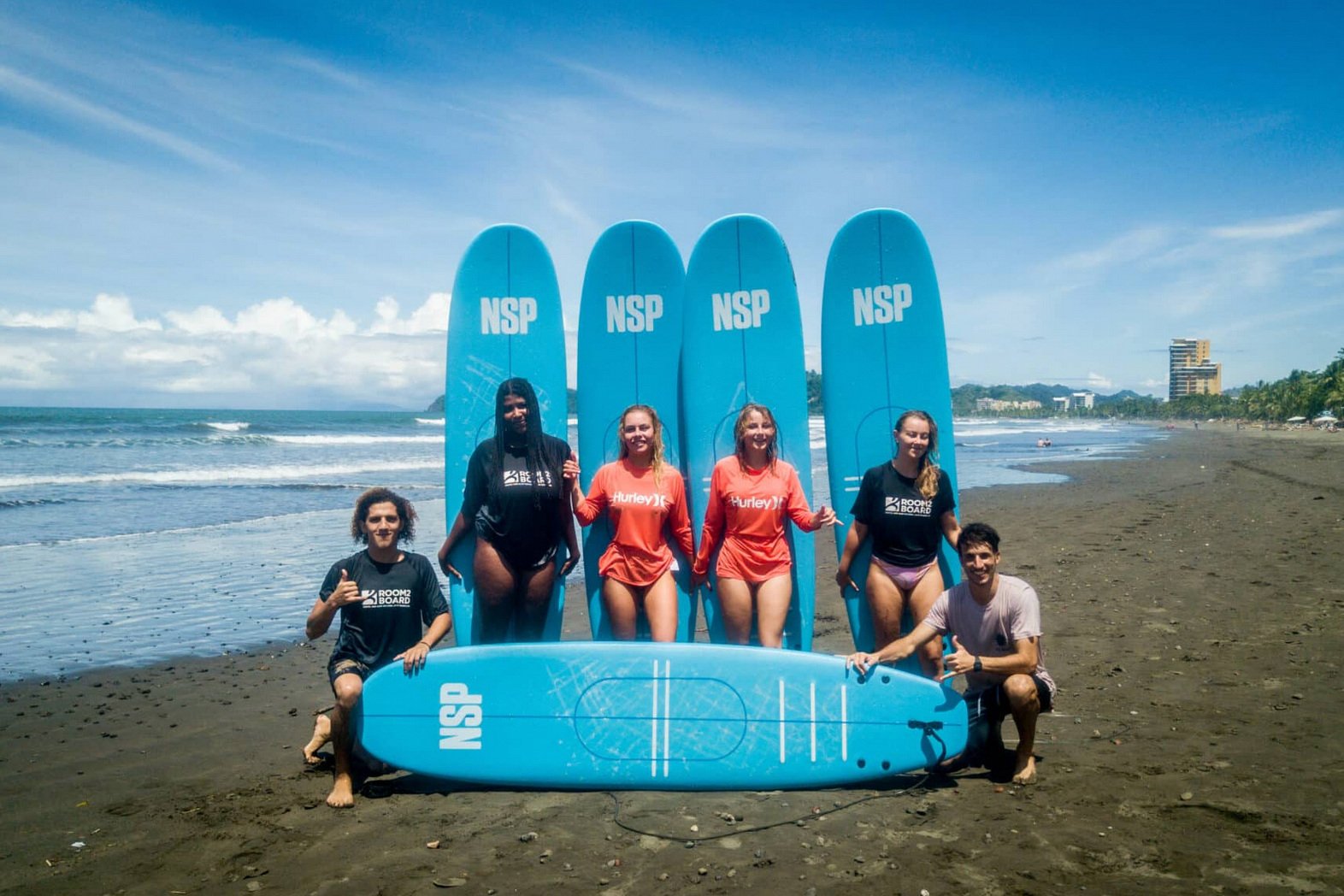





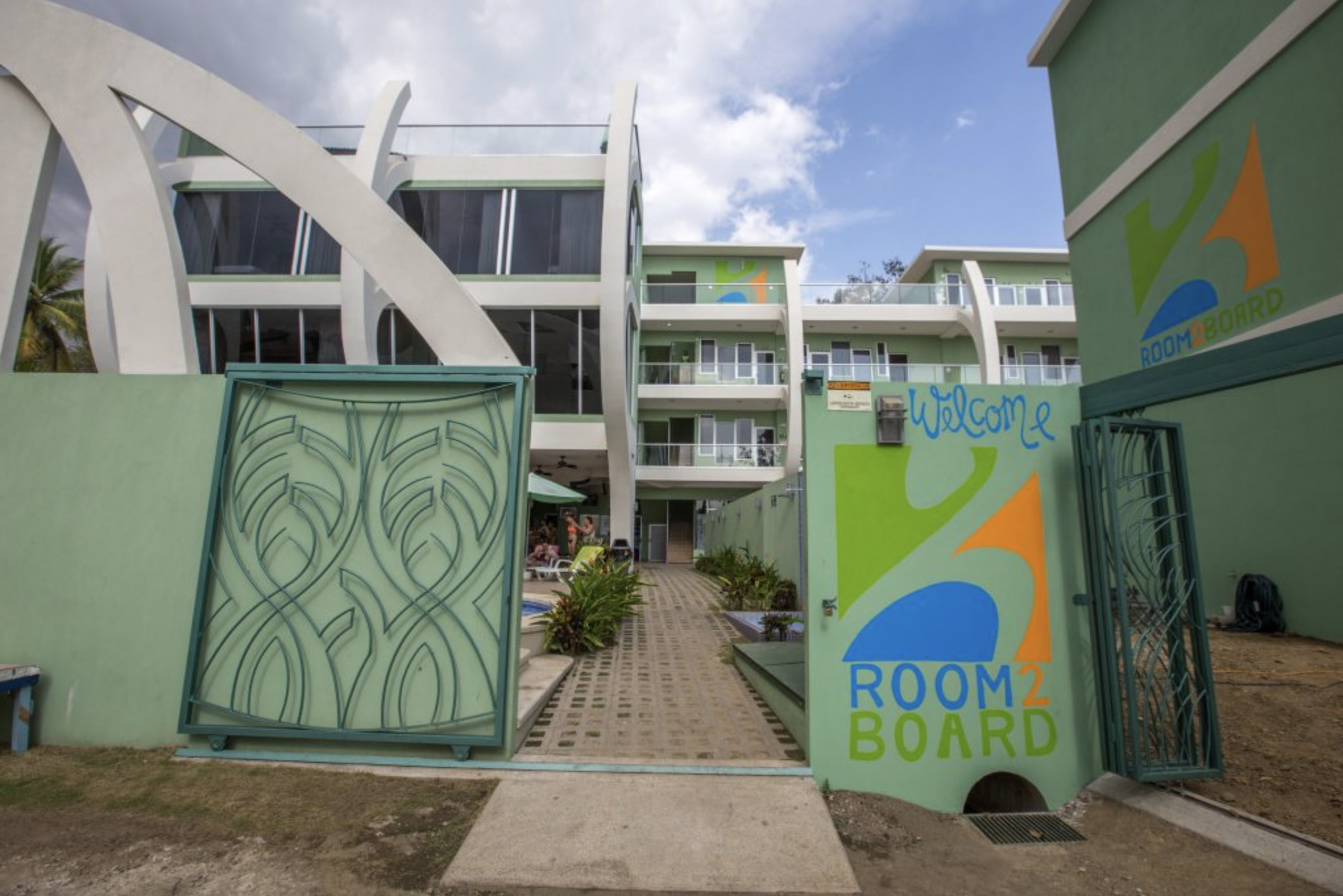











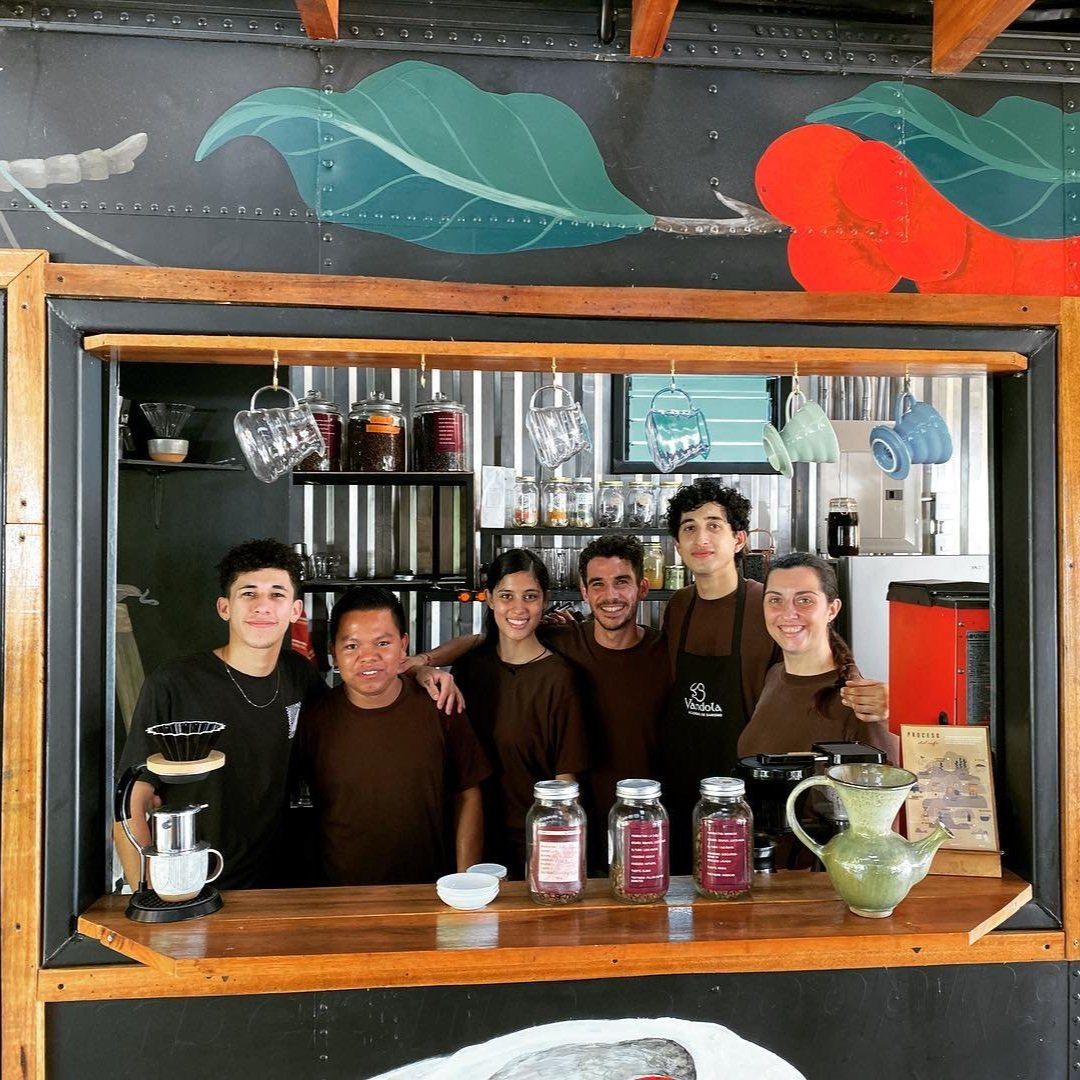









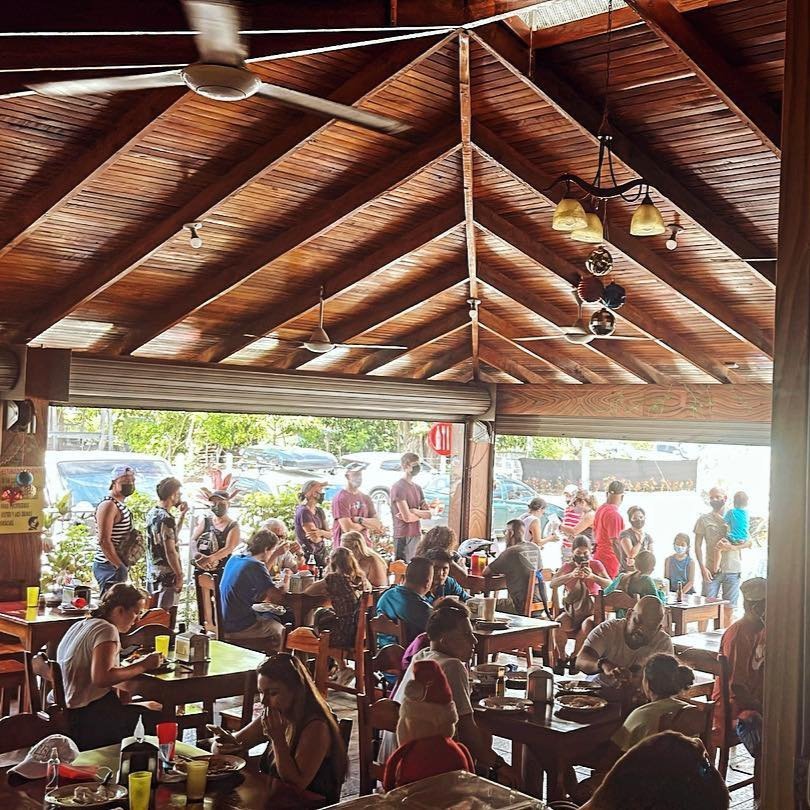


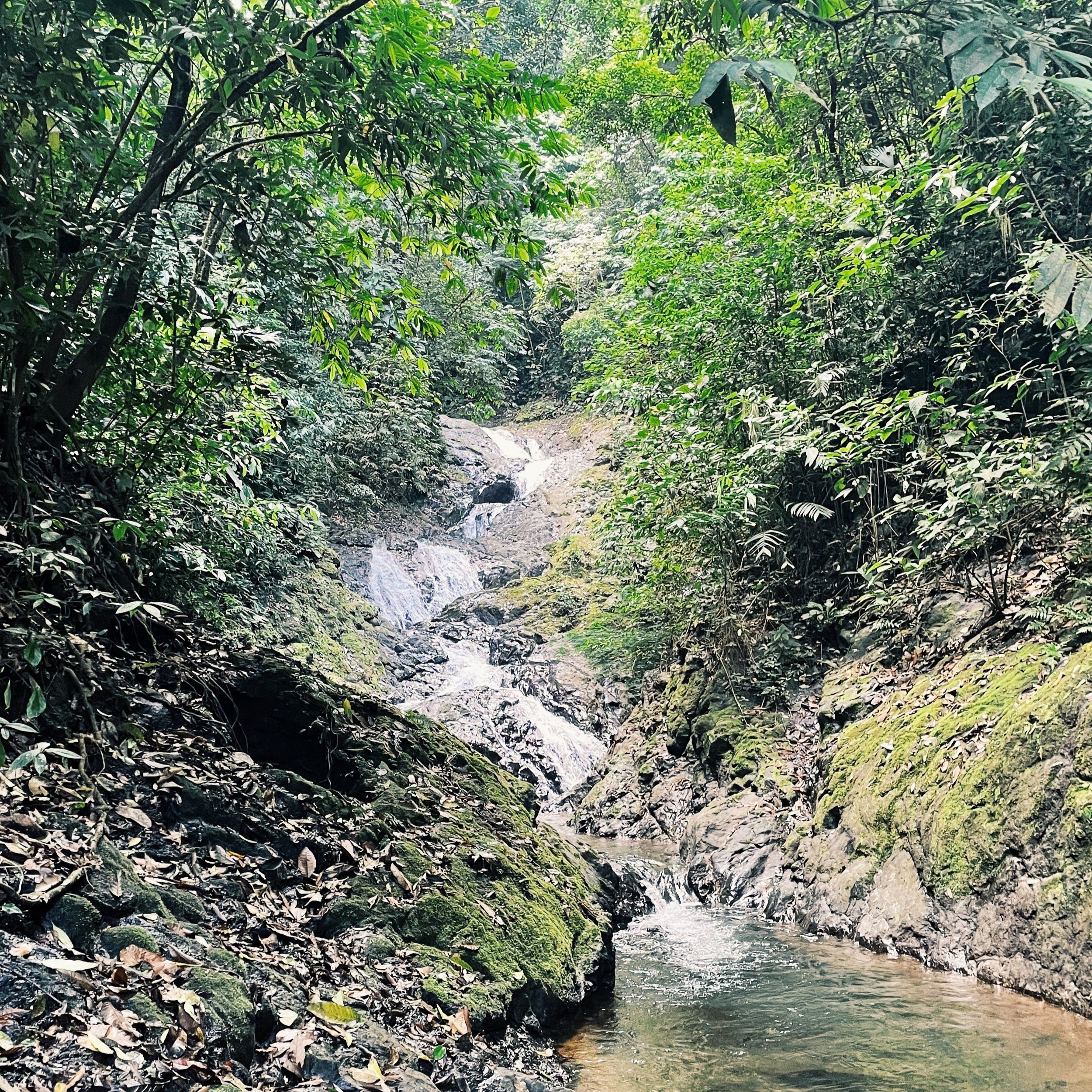
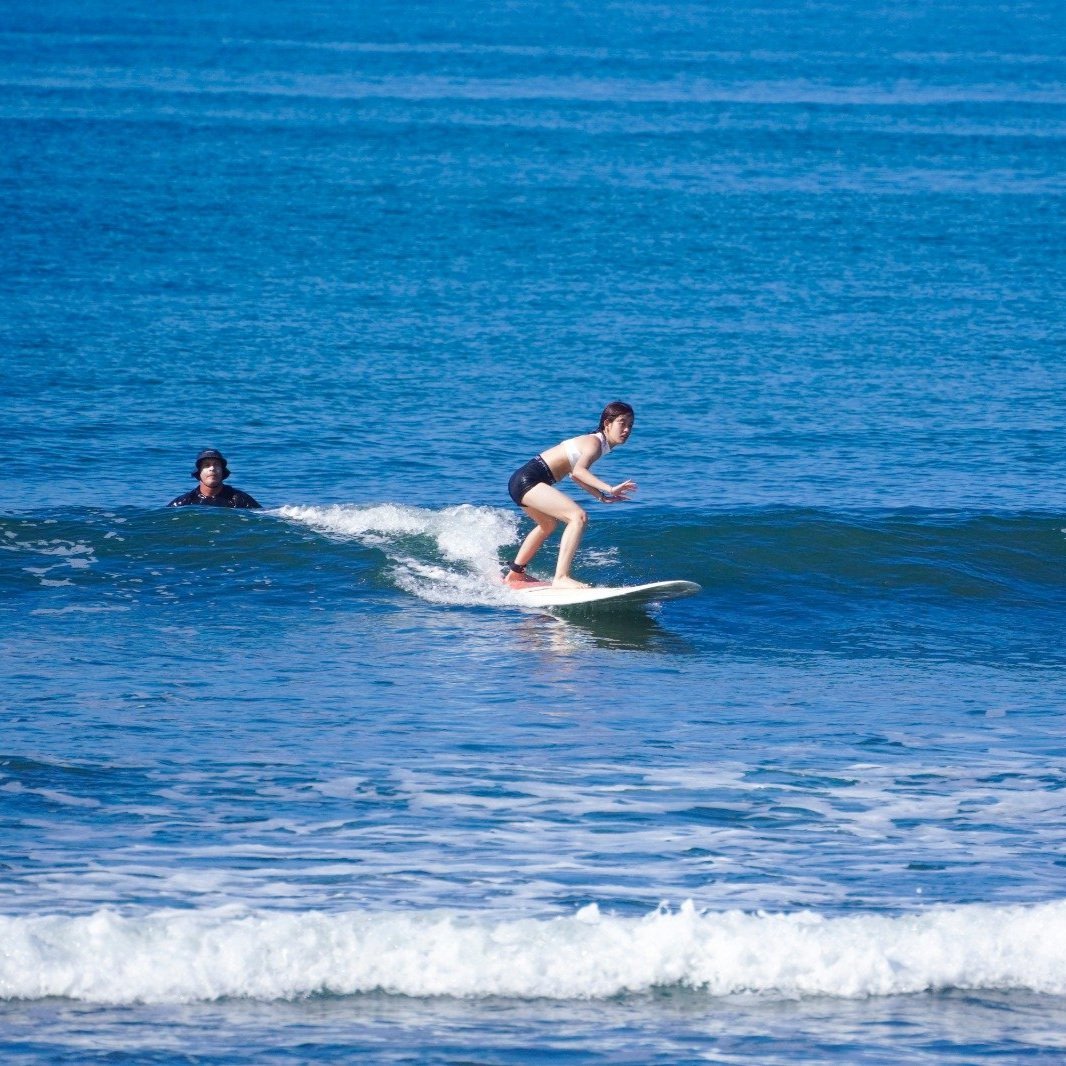








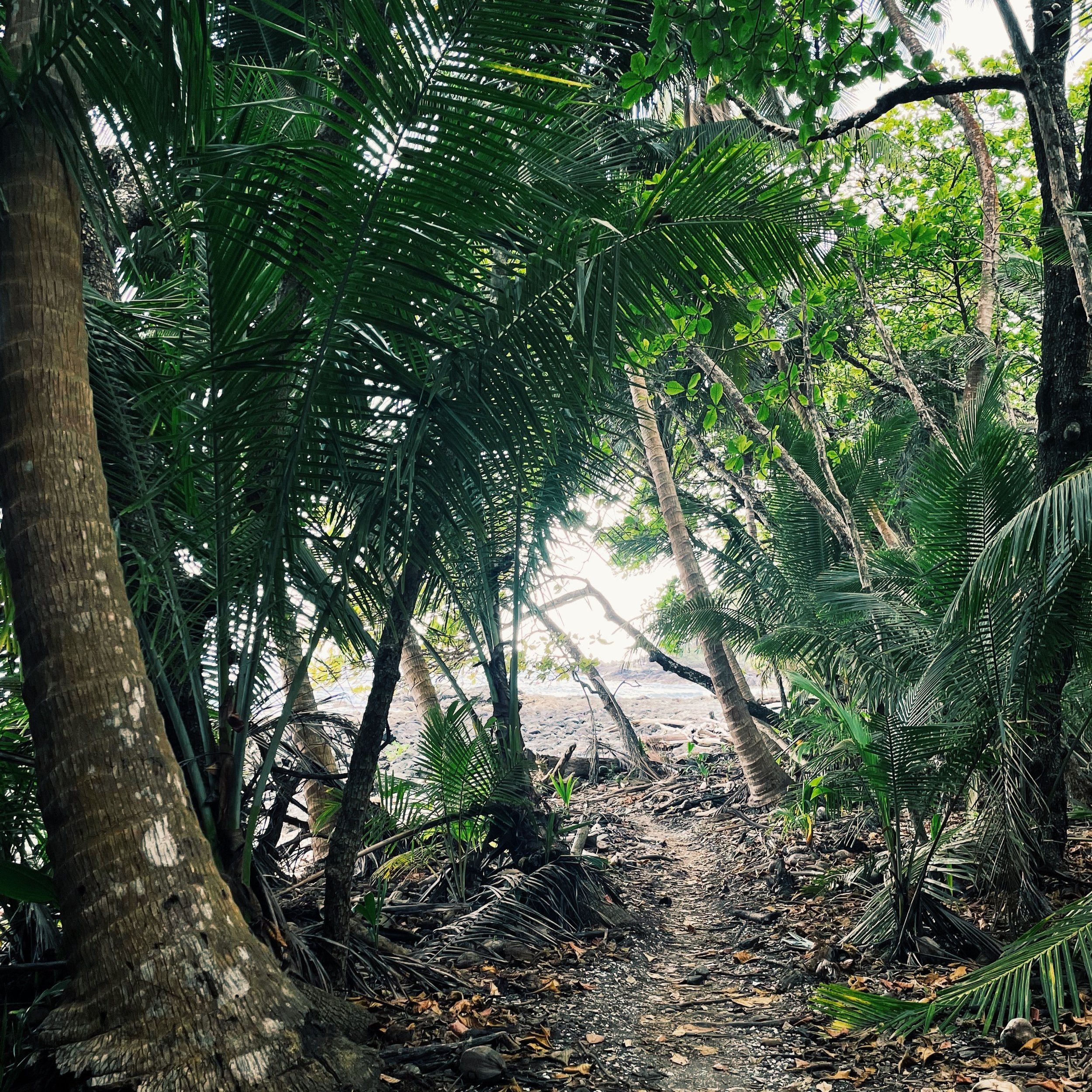


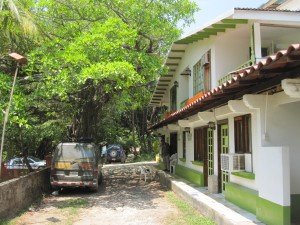


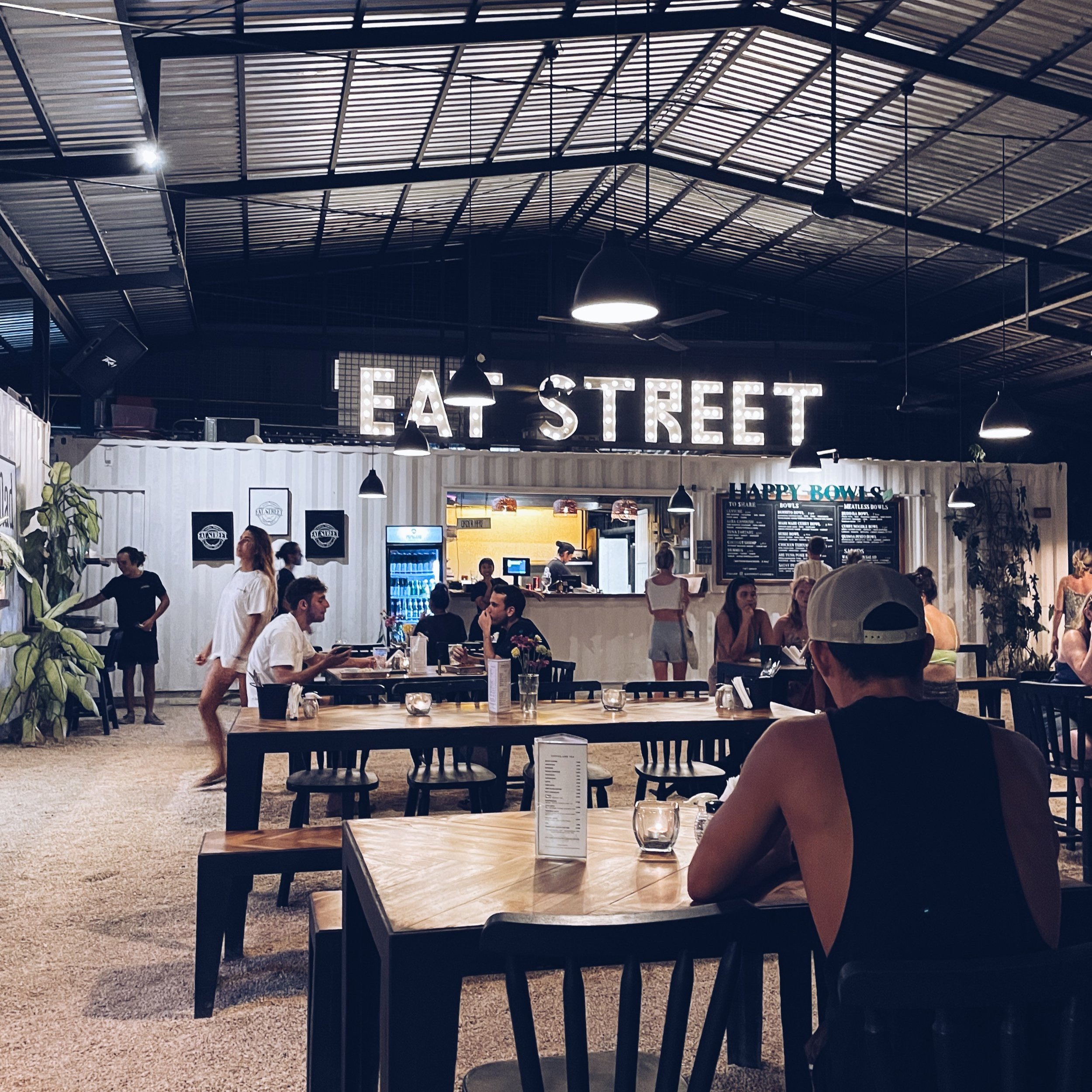












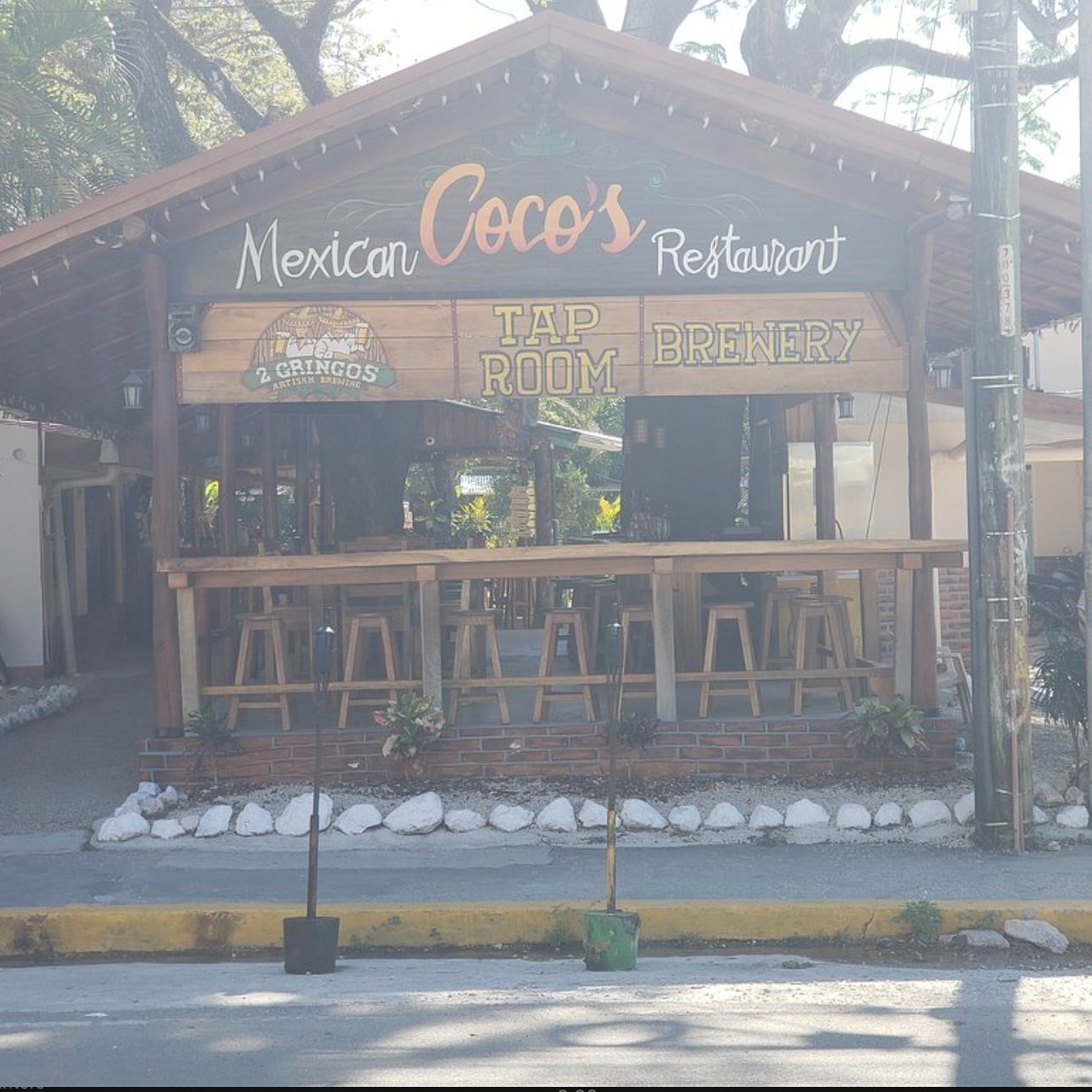

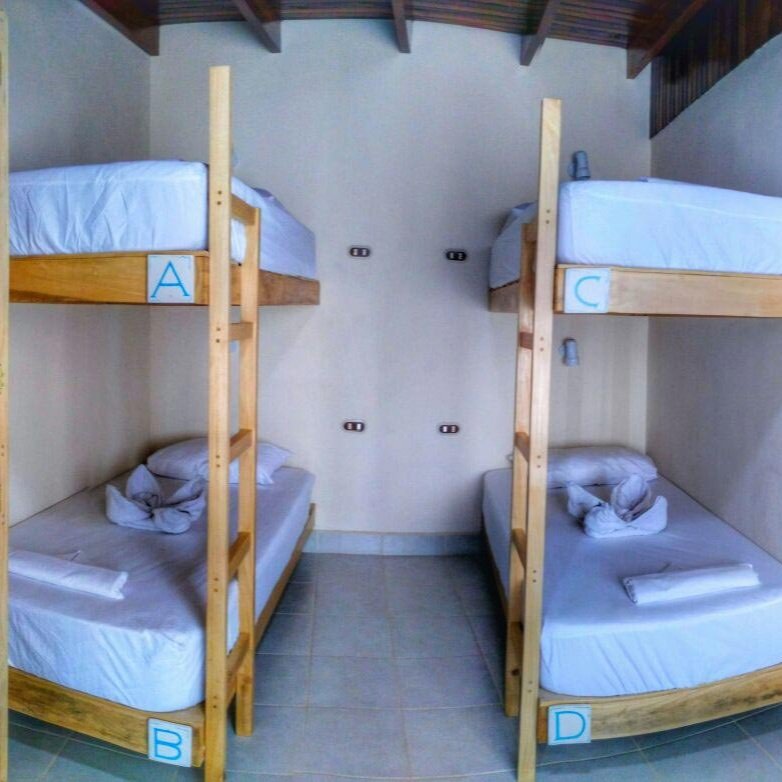


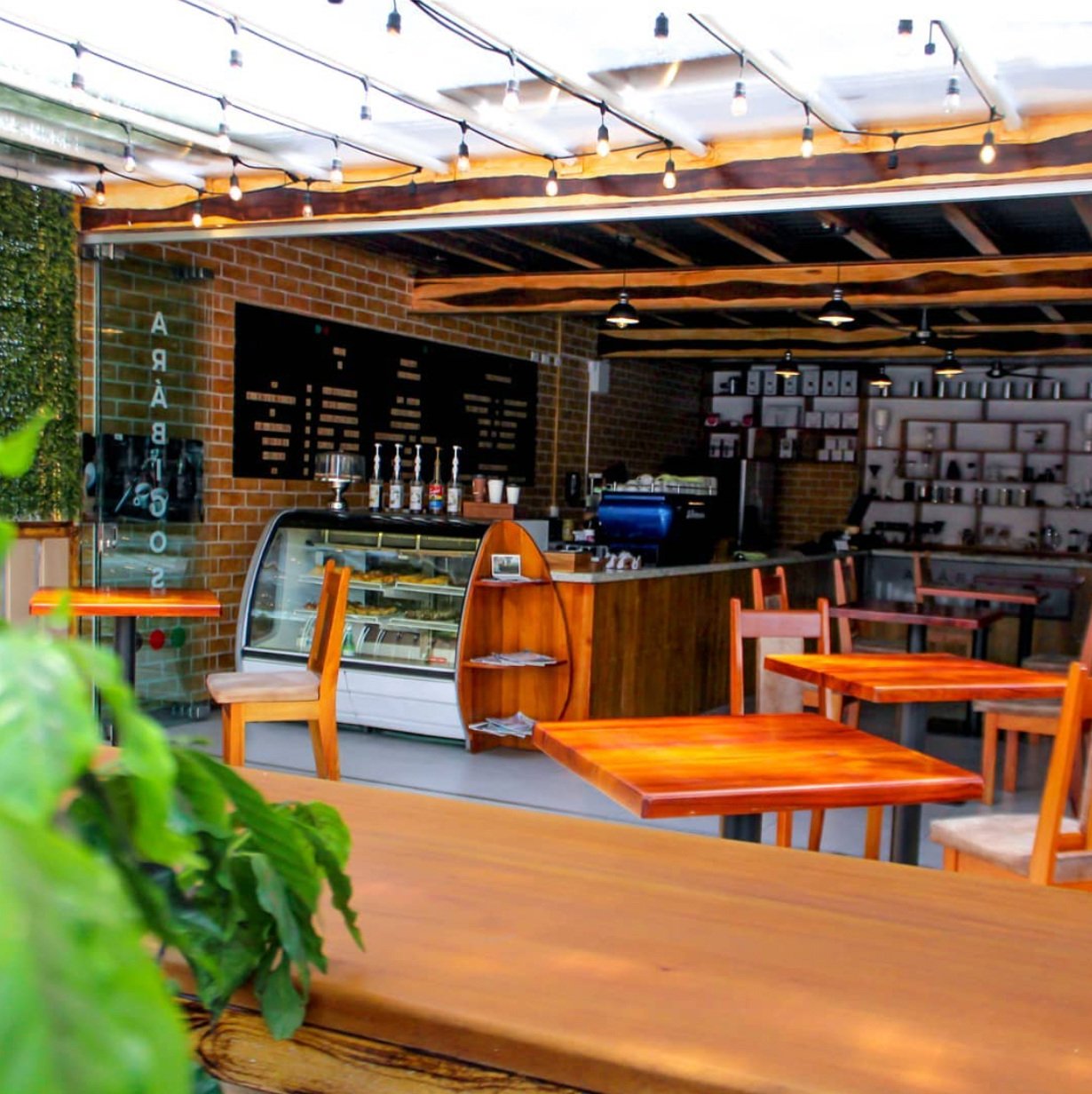


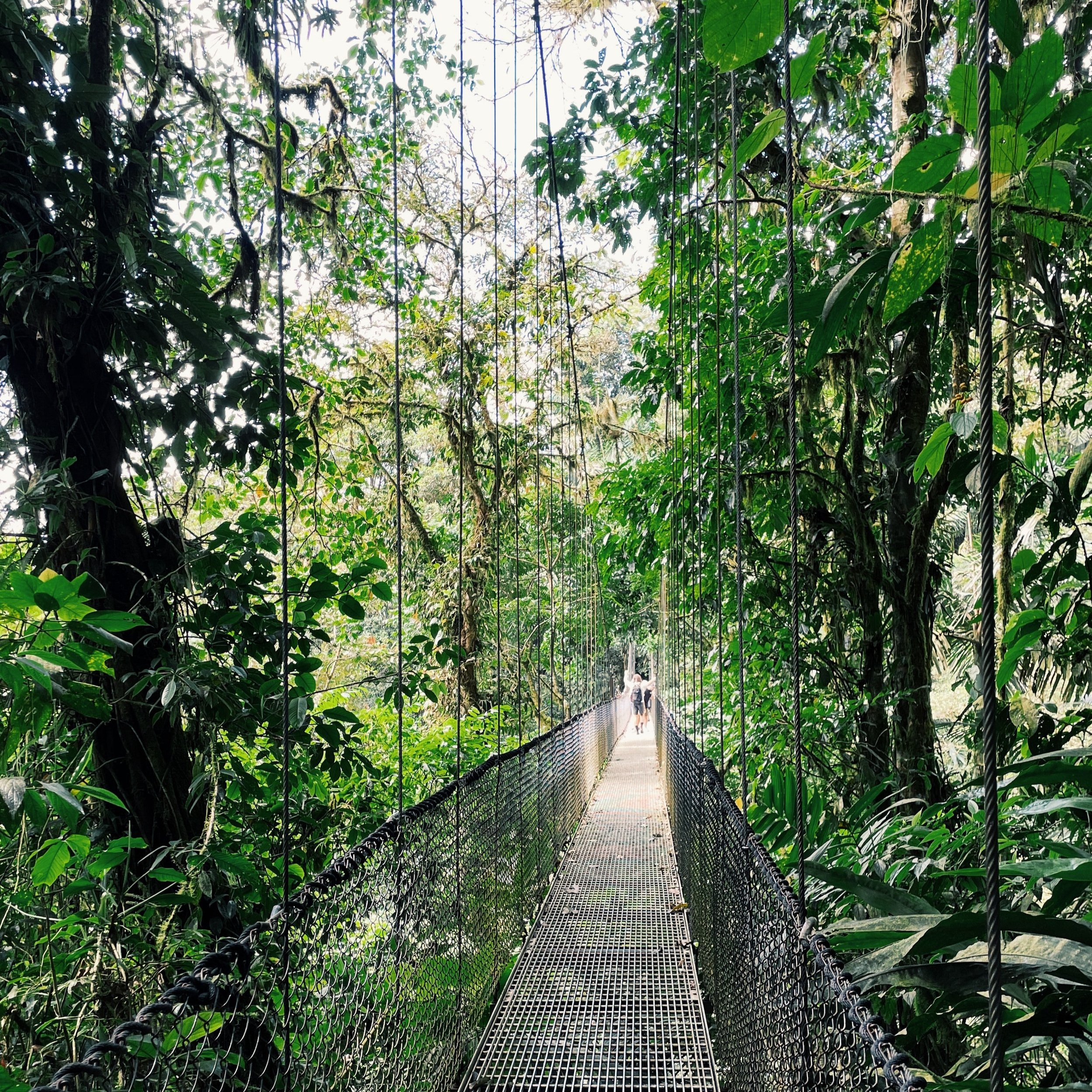
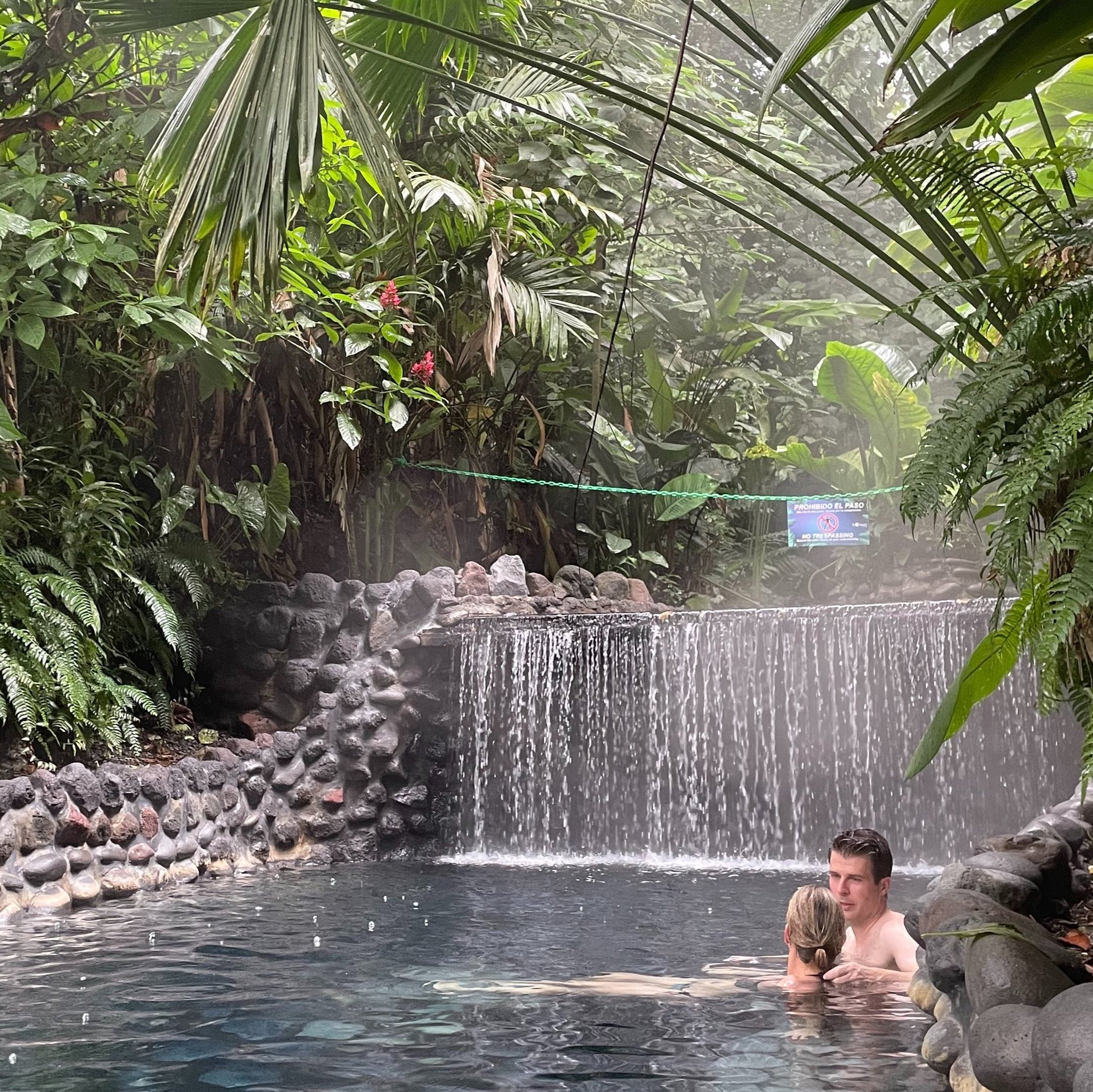


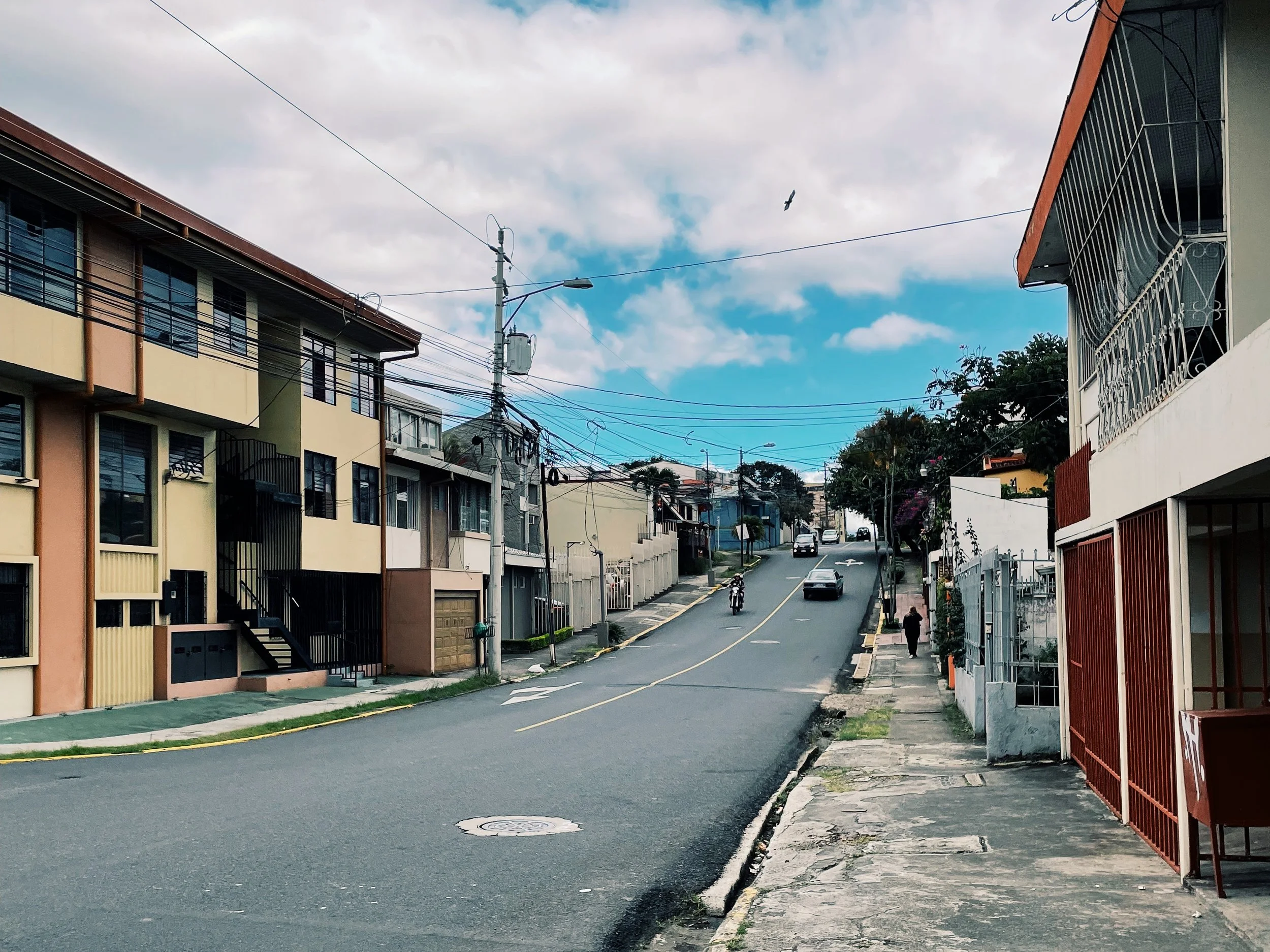







Máncora, Peru, is a surf town with perfect lefts, year-round waves, and an endless summer. Here’s what it’s like to stay and surf in Mancora at the eco-surf lodge La Maison.